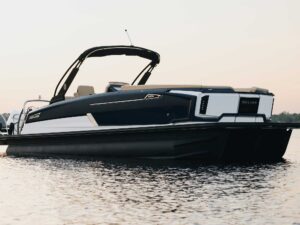You’ve kept your marine diesel mains and generators running well all season, and now the grip of winter is near. But your work isn’t done. To make sure these engines perform well next season, take these six important steps to properly winterize your diesel systems before giving them a long winter’s rest.
1. Fuel Management
Unless properly treated, diesel — especially the newer bio-diesel and low-sulfur fuels — can grow stale and prone to bacteria and fungal infestations while in storage, resulting in sludge and sediment that can plug filters, create starting problems and damage engines. Also, an empty fuel tank invites condensation, and over time this results in water collecting in the bottom of the tank, posing a serious problem for diesel engines. To help prevent any of these maladies, fill up before long-term storage. Then treat the fresh fuel with a diesel biocide/stabilizer such as ValvTect BioGuard Plus 6 ($24.99/32 ounces, defender.com). After treating the fuel, install new primary and secondary fuel filters, and then bleed the fuel lines to eliminate any air pockets.
2. Fresh Oil
Used diesel engine oil contains acids and other contaminants that can eat away at metals over the winter. So ditch the old oil now. To change the oil, run the engine for a few minutes to warm up the oil. If the boat has been hauled, you’ll need the proper motor flushers for the engines (or plumb the intake pumps) to supply cooling water from a garden hose. Installing a Groco SSC engine flush kit ($96.77, jamestowndistributors.com) makes this job easy. Then shut down and drain or pump out the old oil. Change the oil filter and fill the crankcase with fresh oil (per the manufacturer’s specifications). Also change the oil for the transmissions at this time.
3. Good Drainage
Open all drain plugs to purge the raw-water cooling systems. Plug locations vary by manufacturer, so check your manuals. Use a stiff wire to clear any sediment from drains. Also, bump the ignition to turn over each engine (without starting it) to clear water from the pumps. If your boat stays afloat all winter, you can drain the systems by first closing the seacocks for the raw-water inlets, then removing the inlet hoses and intake-pump covers, as well as all drain plugs. After clearing the raw-water systems, replace all of the drain plugs. If you removed the intake-pump covers, give each impeller a light coat of Vaseline and replace the covers.
4. Freeze Prevention
To avoid freeze damage and fight corrosion over winter, plumb the motor flushers or intake pumps to draw rust-inhibiting propylene-glycol antifreeze such as West Marine Pure Oceans minus 50 degrees F ($5.99/gallon, westmarine.com) from a bucket or tank, and run each engine until the solution exits the exhaust. Not only does this displace any standing water and coat the water jackets and heat exchanger with a corrosion inhibitor, but at the same time it distributes inside the engine and transmission a coat of the fresh, clean oil that you put in earlier to help prevent internal rust during storage.
Once the diesel is off, immediately shut down the supply of antifreeze to prevent siphoning liquid into the combustion chambers and hydro-locking the engine. Because antifreeze can swell some rubber materials, replace the intake-pump impellers next spring as part of your recommissioning process. If your boat has closed cooling, check the recommended maintenance schedule to see if you need to change the antifreeze in these systems as well. This is typically at 1,000 hours, but check the level regardless.
5. A Jump on Spring
While you can wait until spring, now is a good time to check zincs, belts and electrical connections, as well as the O-rings on fuel fills. Also inspect the physical connections at the transom and along the exhaust outlets — lots of water flows through here! Replace, repair and service anything that looks suspect or worn, and you’ll have that much less to do next spring.
6. All Sealed Up
Seal the exhaust outlets on the hull and air filters on the engine with heavy plastic and duct tape. This prevents moist air from finding its way into the combustion chambers via open exhaust or intake valves while your diesels are enjoying some well-deserved downtime.
Get more winterizing tips for marine diesel and gas engines at boatingmag.com/winterizing.









